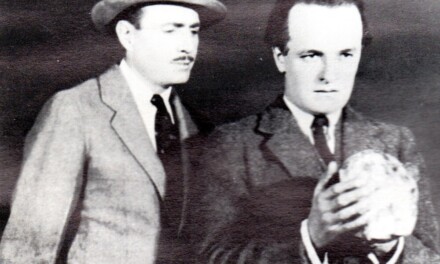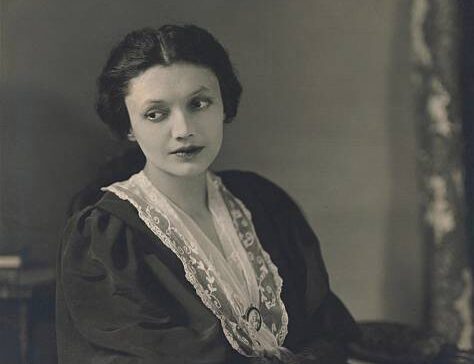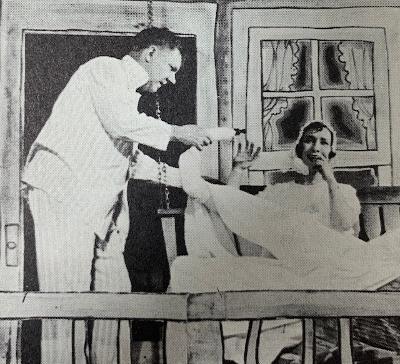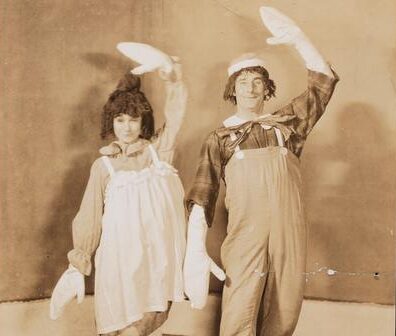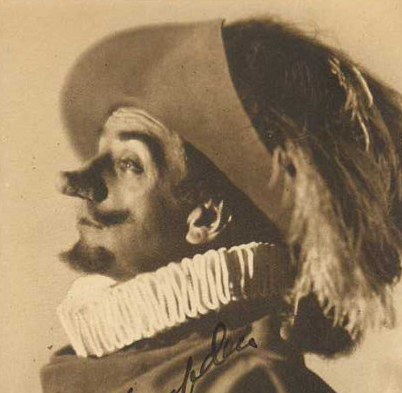
By Samuel L. Leiter
Given the great number of shows opening on Broadway in 1923-1924 (as during every year of the twenties), it’s only natural that a healthy number was of revivals, both period classics and more recent examples, some on their way to classic status, others with less longevity. Several were in foreign languages. After all, this was a season blessed not only with the arrival of the Moscow Art Theatre but of Italian star Eleanora Duse and French star Maurice de Feraudy, each offering a repertory bolstered by revivals.
The roster of revivals given in English included Shakespeare’s Cymbeline, The Taming of the Shrew, Twelfth Night, The Merchant of Venice, Romeo and Juliet, Hamlet (in two productions), Antony and Cleopatra, and Macbeth. Standards from other periods were Oedipus Rex and She Stoops to Conquer. Important “modern” plays from the nineteenth century on included Cyrano de Bergerac, Pelleas and Melisande, The Blue Bird, The Spook Sonata, Fashion, Six Characters in Search of an Author, The Assumption of Hannele, Leah Kleschna, The Kreutzer Sonata, and Hedda Gabler.
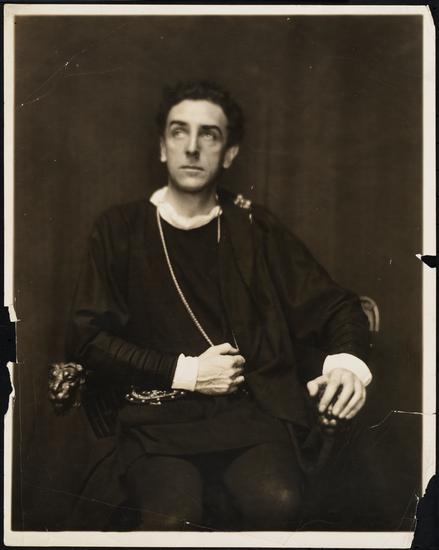

Choosing five is no easy task, of course. Sticking only to the English-language list, my choices are Cymbeline, Antony and Cleopatra, Oedipus Rex, Cyrano de Bergerac, and Fashion. The following comments combine Holly Hill’s contributions to my Encyclopedia of the New York Stage, 1920-1930 with my own remarks.
Cymbeline (Jolson’s Fifty-ninth Street Theatre,10/2/23, 15) makes today’s cut because of the relative rarity of the play’s revival on Broadway. This was only its second of the century. It wasn’t new to 58-year-old leading lady Julia Marlowe, though, who appears to first have played Imogen in 1892. For many years, Marlowe and her husband, 64-year-old E.H. Sothern, exemplars of late 19th-century theatre, had been barnstorming with a Shakespeare repertory, held aloft by their past fame despite the increasingly dated nature of their productions.
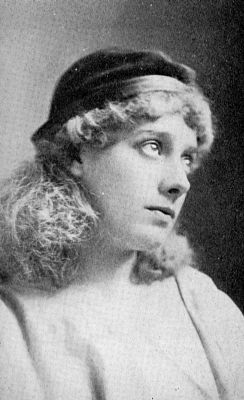

Unfortunately, the reaction to this Cymbeline, part of a repertory that included many of the Shakespeare plays mentioned above, was mixed. Although Sothern’s performance as Posthumus “was finely spirited and impassioned,” according to John Corbin, Marlowe’s Imogen was anything but. “Of late years Miss Marlowe’s mannerisms have steadily grown on her—overwrought and fallacious pathos alternating with outbursts of fake passion. Worst of all is an extreme deliberation in utterance, further retarded by fake pauses that destroy poetic rhythm and even rob her scenes of their prime quality of spontaneity and passion.” Alan Dale, however, liked both stars, commenting that Marlowe played “with her old charm, and with new force. She gave a tragic vehemence to many of the scenes. It was almost like a new Julia Marlowe.”
Of particular interest to Corbin was the visual approach. This critic, who had designed Shakespeare productions before writing criticism, displayed considerable knowledge of the Elizabethan stage in a review that recounted in detail Sothern’s masterly use of authentic practices that made this Cymbeline “by far the most scholarly, artistic and richly colored of the recent Shakespearean revivals.” He had come up with a setting closely approximating the layout of the Shakespearean theatre, using the popular notion of an “inner stage” or “alcove” decorated with draperies, with doorways set into the walls on either side of that space. This allowed for speedy playing and a minimum of time wasted for shifts. However, Sothern elected in the cave and battle scenes to go for “heavy Victorian scenery that involves delay in proportion as it is magnificent.”
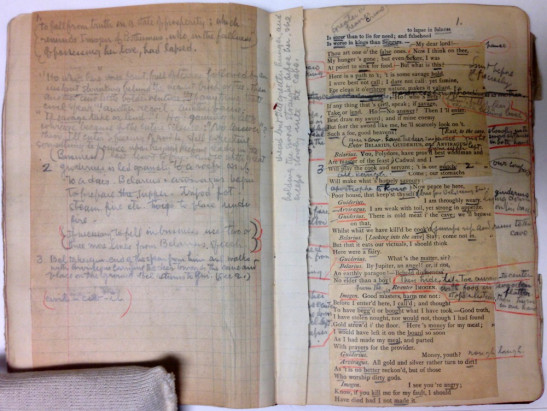

Antony and Cleopatra (Lyceum Theatre, 2/19/24, 32) deserves a nod because it represents another in the string of classics starring Jane Cowl, America’s most ambitious classical actress of the decade. Heywood Broun waggishly declared that the play was Shakespeare’s “sole attempt to write a play after the Shavian manner,” although he thought Shaw’s Cleopatra was the better one. In his view, Cowl played the Queen of the Nile as a present-day flapper, “pert and saucy.” He praised the “glorious pace” set by director Frank Reicher, but never experienced the play’s tragic heights. Cowl and her Antony (Rollo Peters), he felt, were more like Columbine and Pierrot.
Recalling the team’s Romeo and Juliet from the previous season, Percy Hammond judged Cowl’s Cleopatra simply her “adorable Juliet transported to Alexandria.” Peters lacked the stature and maturity for the Roman general and his beard made him look “more like General Grant.” Hammond noted that the production used Sir Herbert Beerbohm Tree’s deeply cut version, in which Antony is onstage more than Cleopatra and found that the revival, which featured many physically slight performers “rattling around in stupendous roles,” had “something pygmy about it.”
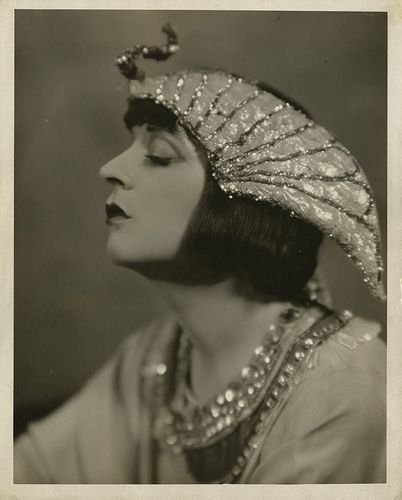

More enthusiastic was Alexander Woollcott, who discovered “as rich, imaginative, and generally satisfying a production of the play as this generation is likely to see.” To him, Cowl’s Cleopatra entered her “into the small company of the Olympians,” although he agreed with his peers that Peters was too young and slight for his role.
Sophocles’ Oedipus Rex may be the most admired Greek tragedy but it receives far fewer major revivals than another of the playwright’s great works, Antigone, whose political ideas have made it a favorite, especially in the years following World War II. Among the few Oedipus productions to reach Broadway was one directed by and starring the English classical actor, Sir John Martin-Harvey (Century Theatre, 10/25/23, 20), originally seen in London in 1912, where it was mounted at Covent Garden by Germany’s master director Max Reinhardt. It was unusual for its time in omitting a curtain, so the audience saw the set the moment it entered. Today, of course, this is standard practice and the sight of a curtain may even suggest a somewhat conservative offering.
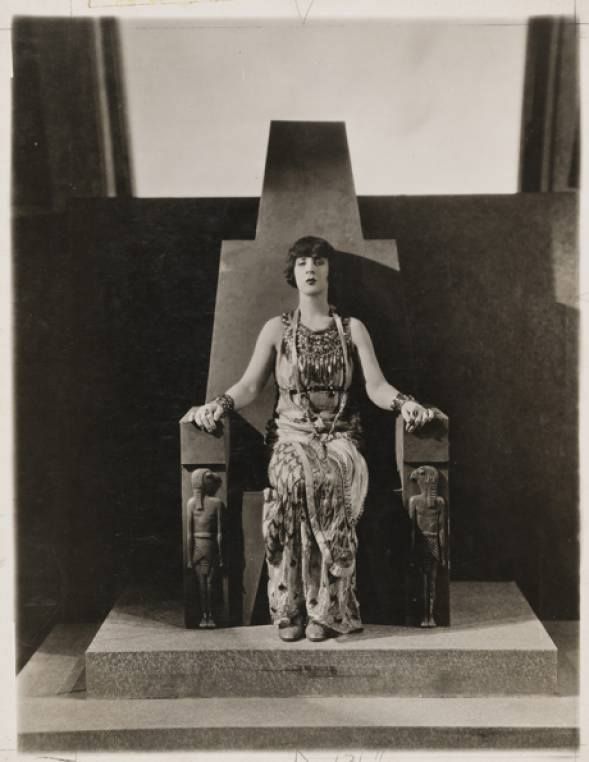

John Corbin thought the play sprang to life in the true Hellenic nature of its design, which, instead of the white columns of nineteenth-century classical staging, was “superbly colored. Yet there was no trace of the fantastic and bizarre, such as marred the pseudo-archaeological production of Granville-Barker.” Harley Granville-Barker, it should be noted, directed several plays by Euripides, but never did Oedipus Rex.
The vast spaces of the Century proved perfectly suited to the dimensions of Sophocles’ tragedy. The production, said Corbin, had “a prevailing and overwhelming atmosphere of majestic law and religious piety,” and “was acted through all its varied climaxes with a fine and full sense of its intrinsic drama.” Much use was made of the aisles, a Reinhardt touch, with the citizens of Thebes pouring down them early in the play and with Oedipus, blinded, stumbling through the audience for his final exit.
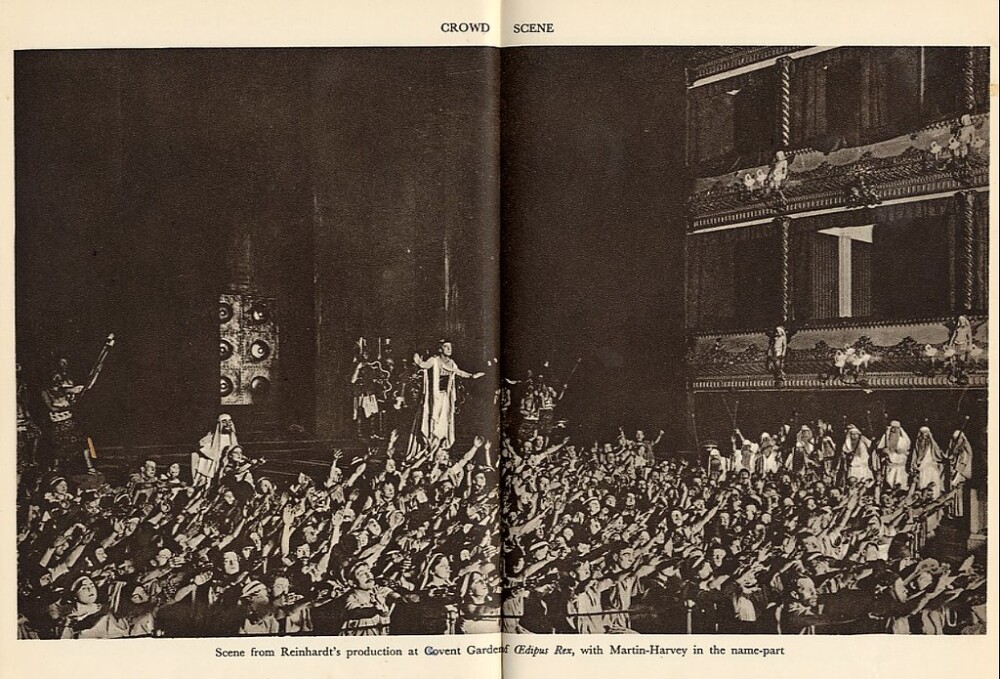

Most found Martin-Harvey a stately king, with an unfortunately strident voice. Corbin said he fell “appreciably short in passages of Lear-like raging, but [gave] a creation of great dignity and power, especially admirable in realizing the underlying significance of each varied turn in the drama.”
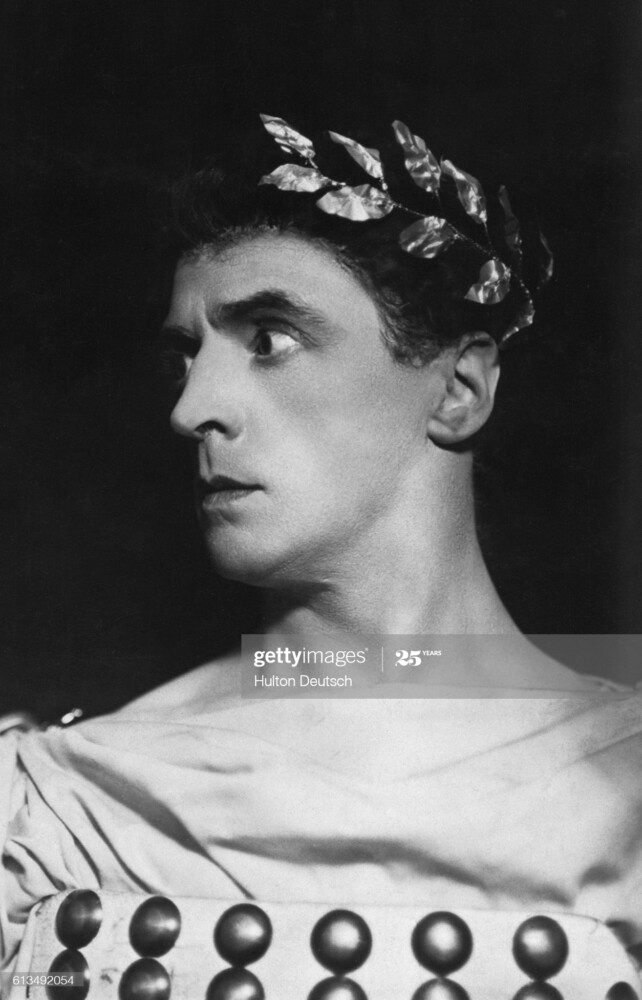

For many years following Walter Hampden’s hit revival of Cyrano de Bergerac (National Theatre, 11/1/21, 250), it remained the standard to which later New York productions of Edmond Rostand’s 1897 French romantic play. Its great significance was its introduction of Brian Hooker’s adaptation, which continues to be the most popular one for English-language stagings. John Corbin called it “more redolent of the original than any other.” Stark Young quibbled that it was smooth and actable but too simplified in spots and too prudent in conversation.
Launching barnstormer Hampden’s season of classical rep with his own company, the revival as well as the star’s project won wide acclaim. Comparing the performances of the swashbuckling Cyrano of Richard Mansfield and Coquelin to Hampden’s, the Evening Telegraph noted that Mansfield had excelled in the death scene, Coquelin in the lighter scenes, and “It remained for Mr. Hampden to be equally expressive in both the lighter and the more serious aspects of this great comedy.”
Young thought Hampden’s a slight talent lacking in style, “not a great actor but a fine centre of theatrical belief and labor.” Corbin, though, commented, “Mr. Hampden’s Cyrano is an interpretation of great physical vigor, deep truth and intensity of passion.” He was someone who really fenced yet seemed to improvise verses during the first-act duel, made one believe he could rout one hundred attackers, radiated bravura in the moonman scene, and, at the end, “soared high in the region of tragic pathos.”
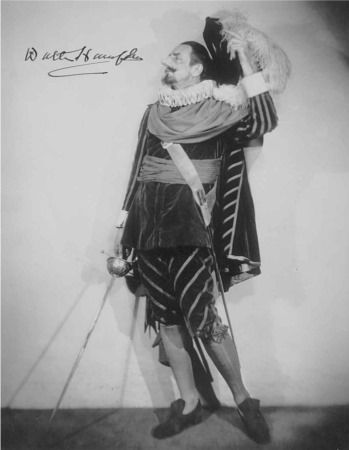

Hampden’s Cyrano returned at the actor’s own theatre on 2/18/26, for 96 performances, and for 143 when it came back on 12/25/28. Many considered the role the greatest of the star’s career. “There is something in that false and grotesque nose which releases the real Hampden,” suggested Richard Dana Skinner. “Perhaps he identifies his own idealistic nature more closely with this hero than with any other. At all events, he puts into Cyrano a volume of feeling and warmth which many find lacking in his portrayal of other noble parts.”
Cyrano de Bergerac would remain in Hampden’s repertory for many years.
We close this survey with an amusing Off-Broadway revival of Anna Cora Mowatt’s 1845 Fashion (Provincetown Playhouse, 2/3/24, 240), still occasionally performed albeit with difficulty because of its uncomfortably dated depiction of a black servant. The same Brian Hooker who did Hampden’s Cyrano adaptation served as adaptor for this somewhat abbreviated spoof of Mowatt’s comedy about Americans aping European fashions and manners. The show added a dozen period songs, arranged by Deems Taylor and Hooker, was directed by Robert Edmond Jones and James Light, and had sets by Jones, Cleon Throckmorton, and Reginald Marsh, each among the top talents of the day in their respective lines. The Provincetown Players, so important in Eugene O’Neill’s early work, produced, highlighting what John Corbin called the play’s “archaic absurdities.”
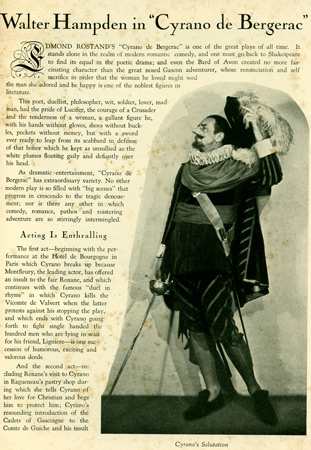

“The actors trumpet their asides to the audience through their hollowed palms,” wrote Corbin, and accented outdated performance methods. There were footlights, an enlarged sentimental Valentine for a curtain, and a two-piece orchestra. Ludwig Lewisohn found all “exquisitely done, of an adorable innocence.” Audiences showed their approval by hissing the villain, cheering the virtuous, and leaving the theatre singing. Several critics, though, believed the piece might have been better served if played straight.
Corbin observed, “As Mrs. Tiffany, Clare Eames is a striking figure, frequently funny. But her task seems to be inherently impossible. The one true way to make a pretentious and vulgar upstart amusing is to make her unmistakably real and true. Further accentuate her absurdities, as it falls to Miss Eames’s hard lot to do, and the result is apt to become nondescript. Painting the lily is journeyman’s work compared to satirizing satire.”
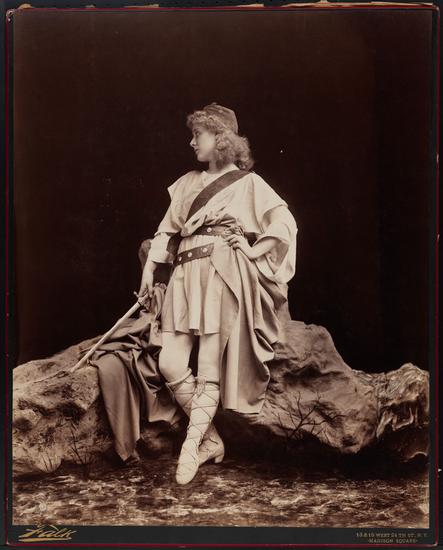

On the other hand, said Corbin, Perry Ivins “came through with flying colors as Adam Trueman.” Best of all, was Mary Morris as “the sentimental heroine,” Gertrude. “This Gertrude is the very heart and soul of those young ladies over whose graves the poets of the eighteen forties wept copious tears. . . . Even her plastic attitudes, perfect in poise and line, are of the graveyard school of sculpture. Laugh as one will and must, the performance has that highest of all satiric qualities of making one feel again the true quality of the thing satirized.”
Others involved included Mary Blair, Helen Freeman, Stanley Howlett, and Walter Abel, later well-known on screen, as Col. Howard.
“Leiter Looks Back” will continue doing so for the plays, musicals, revues, and revivals of the even busier 1924-1925 season. Stay tuned.



